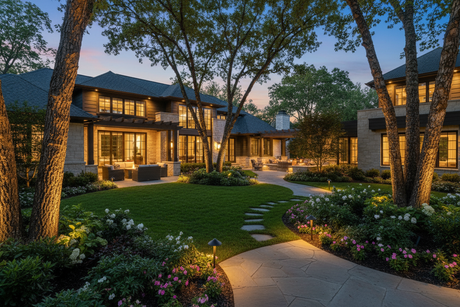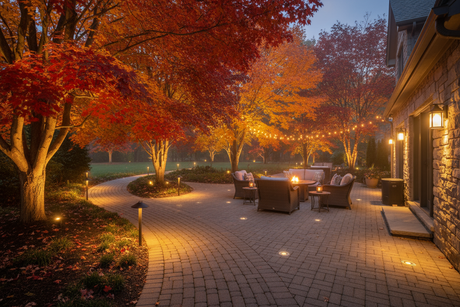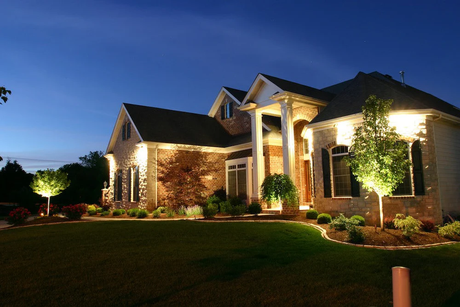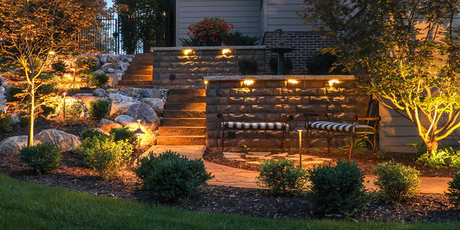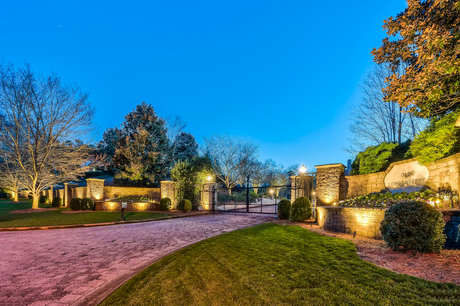Introduction: The Frustrating Short Lifespan of Well Lights
If you've invested in landscape lighting only to find your well lights failing within two years, you're not alone. Many homeowners face this frustrating issue, watching their outdoor lighting system deteriorate far sooner than expected. Well lights (also called in-ground lights) are some of the most useful yet problematic fixtures in landscape lighting. When they work, they create stunning uplighting effects, highlight architectural features, and provide subtle path illumination. But when they fail prematurely, they become expensive disappointments that require frequent replacement.
The good news? With the right knowledge, you can select well lights that last for decades rather than just a couple of seasons. In this comprehensive guide, we'll explore:
- The top reasons most well lights fail so quickly
- Critical features to look for in long-lasting well lights
- How to properly install and maintain them
- The best materials and technologies for durability
- Real-world recommendations that balance performance and longevity
By the end of this guide, you'll be equipped to make smart purchasing decisions-saving money and avoiding frustration long-tern.

Why Do Most Well Lights Fail Within 2 Years?
Understanding why standard well lights fail is the first step toward choosing better alternatives. Here are the primary culprits behind premature failures:
1. Poor Waterproofing and Inadequate IP Ratings
Well lights sit flush with or below ground level, making them exceptionally vulnerable to water infiltration. Many budget fixtures claim to be "water-resistant" but lack proper ingress protection (IP) ratings. An IP68 rating (fully submersible) should be the minimum for well lights, yet many manufacturers cut corners with inferior seals and gaskets.
Moisture that seeps into the fixture causes:
- Corrosion of metal components
- Short circuits in electrical connections
- LED driver failures
- Clouding of lenses
2. Cheap Materials That Degrade Quickly
Low-cost well lights often use:
- Thin, non-stainless steel housings that rust
- Plastic (PC or ABS) that becomes brittle with UV exposure
- Poor-quality brass or aluminum alloys that corrode
- Weak gaskets that dry out and crack
For example, some imported models use zinc alloy castings that develop pinholes after just one winter, allowing water to destroy internal components.
3. Thermal Management Issues
LEDs themselves can last 50,000+ hours, but their drivers often fail much sooner due to:
- Overheating in enclosed underground spaces
- Poor-quality capacitors that dry out
- Inadequate heat sinking
- Voltage spikes from improper low-voltage transformer sizing
Cheap well lights frequently use undersized drivers that can't handle temperature fluctuations, leading to early burnout.
How to Choose Well Lights That Actually Last
1. Look for Superior Waterproofing
- IP68 Rating: This ensures complete protection against dust and prolonged submersion. IP67 isn't sufficient for permanent in-ground use.
- Marine-Grade Stainless Steel: 304 or 316 stainless steel housings resist corrosion far better than powder-coated metals or plastic.
- Double O-Ring Seals: High-quality silicone gaskets at all entry points prevent water infiltration over years of expansion/contraction cycles.
- Potting Compounds: Some premium lights use epoxy-filled housings to completely seal electronics from moisture.
2. Select Durable Materials
- Housings: Solid brass or heavy-duty stainless steel outperform plastic or thin metals.
- Lenses: Tempered glass resists scratching and clouding better than polycarbonate.
- Gaskets: Silicone lasts longer than rubber, which becomes brittle.
- Connectors: Corrosion-resistant gold-plated or tinned copper contacts prevent voltage drop issues.
3. Prioritize Thermal Design
- Efficient LED Drivers: Look for constant-current drivers like the Infineon BCR431U that maintain stable output despite voltage fluctuations.
- Adequate Heat Sinking: Aluminum heat spreaders or fins help dissipate heat in confined spaces.
- Quality Capacitors: Japanese-made capacitors (like Nichicon or Rubycon) last much longer than generic Chinese components.
- Proper Wattage Rating: Don’t overload fixtures – a 5W LED should have a driver rated for at least 7–8W.

4. Choose the Right Light Source
- High-CRI LEDs: Look for ≥80 CRI (like the Inspire Lighting's 80 CRI) for accurate color rendering of plants and stonework.
- Appropriate Color Temperature: 2700K–3000K (warm white) creates inviting ambiance, while 4000K+ appears too harsh for residential landscapes.
- Proper Lumens: 50–300 lumens is ideal for most well light applications. The Best Pro Lighting spotlight provides 300 lumens at 5W – a good balance of output and efficiency.
5. Consider Power Source Carefully
For reliability:
- Low-Voltage (12V) Systems: Hardwired systems with proper transformers outperform solar in consistency and longevity. The brass in-ground lights with 12V input are particularly reliable.
-
If Using Solar: Only choose models with:
- ≥2W solar panels
- Replaceable batteries (like LiFePO4 chemistry)
- Separate panel mounting for optimal sun exposure
Installation Best Practices for Longevity
1. Prepare the Site Properly
- Drainage Layer: Place 2–3 inches of gravel beneath each fixture to prevent water pooling.
- Elevated Placement: Install lights slightly above grade (1/4") to encourage water runoff.
- Avoid Low Spots: Never install in natural depressions where water collects.
2. Use Quality Components Throughout
- Transformer: Size at least 20% larger than total wattage (e.g., 100W transformer for 80W of lights).
- Wire: Use thick (12–14 AWG) direct-burial cable to minimize voltage drop.
- Connectors: Waterproof gel-filled wire nuts or irrigation-style crimp connectors prevent corrosion.
3. Follow Manufacturer Guidelines
- Don't Over-Tighten: Compression fittings should be snug but not distort housings.
- Respect Wattage Limits: Don’t install higher-wattage bulbs than specified.
- Allow Ventilation: Some designs need air space around them for cooling.

Conclusion: Invest in Quality for Long-Term Performance
While cheap well lights may seem appealing at $20–$50 per fixture, their short lifespan means you'll replace them every 2–3 years. Investing $100–$200 in high-quality, properly specified well lights from reputable manufacturers actually saves money over a 10-year period while providing consistent, beautiful illumination.
By applying these principles, you can create a landscape lighting system that enhances your property's beauty and security for a decade or more. Don't settle for disposable lighting – choose well lights designed to last as long as your landscape deserves.
Would you like specific recommendations for your climate or landscape design? Feel free to ask in the comments below!





